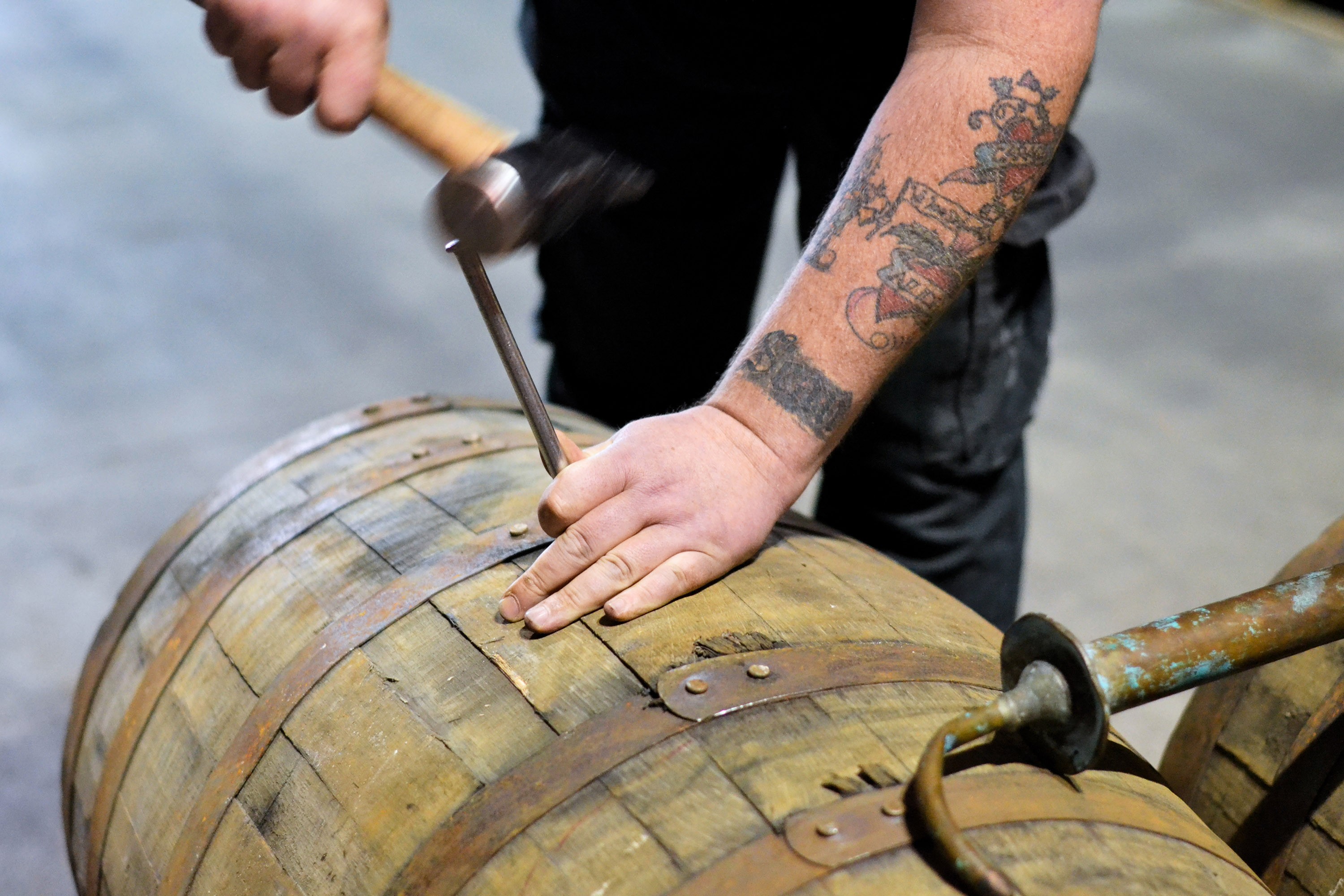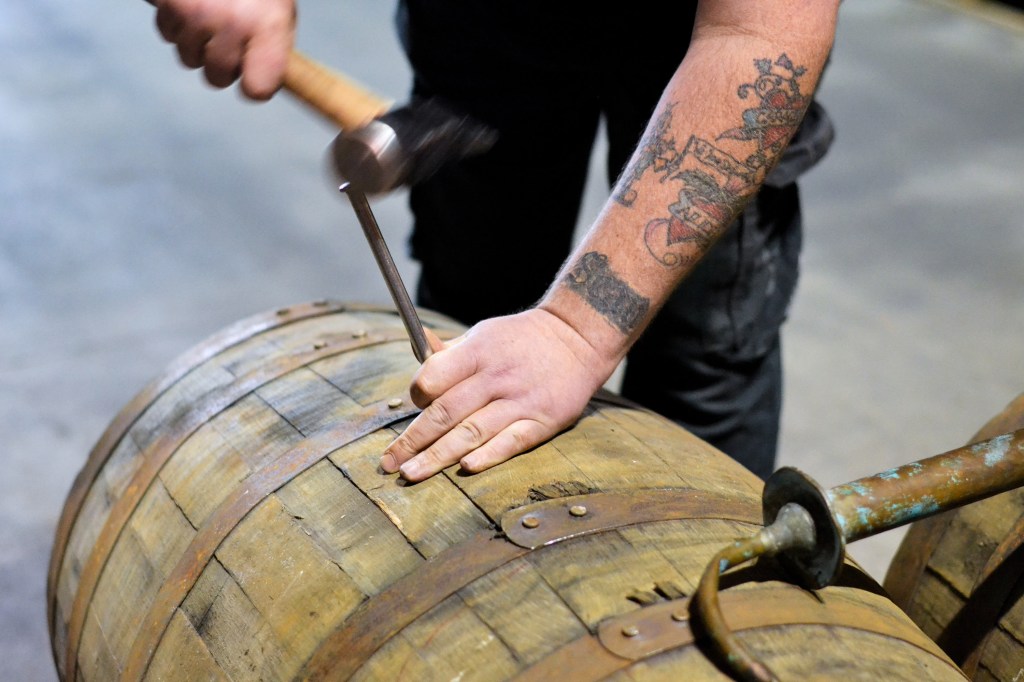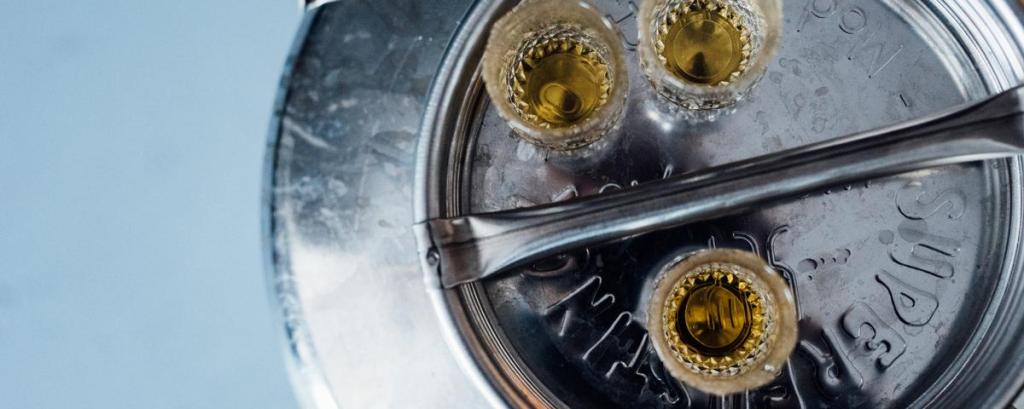There’s no music playing at the Fiddichside Inn, a tiny pub in Craigellachie, Scotland fittingly located on the bank of the River Fiddich. You can hear the clock on the wall ticking, and owner Joe Brandie shuffling around behind the bar to grab whisky from the shelf. I ask Brandie what he likes to drink as he pours me a dram of Lagavulin 16.
“I worked at Macallan for 7 years so I used to drink that, but I stopped drinking 22 years ago,” he tells me.
Videos by VICE


Historically, Brandie’s most common non-Scottish visitors came from other parts of Europe, but this year was different. “There are more people from America this year than I’ve ever seen before,” Brandie says of his clientele. “Last year it was Germans. This year, Americans. It’s been very popular.”
A rise in American interest in Fiddichside makes sense when you look at how much Scotch whisky Americans are buying. Last year, Americans poured more than 2.1 billion dollars into Scotch country by buying about 9.6 million cases of Scotch, according to the Distilled Spirits Council’s Economic & Strategic Analysis Department.
Scotch is a spirit often associated with someone who looks like Brandie, an old white guy, but here at Fiddichside, I’m sitting next to two millennial women and a young couple from Japan. Apparently Scotch isn’t just for your grandpa, as the stereotype may suggest.



About six miles down the road from Fiddichside, Dufftown is a town responsible for producing some of the most popular Scotch whisky on the market. Dufftown couldn’t be any more picturesque between its grazing highland cattle and rolling green hills. It even has a goddamn castle.
Balvenie Castle is surrounded by verdant barley fields and more of those highland cows. It’s the namesake of Balvenie distillery, a whisky distillery owned by William Grant & Sons founded in 1892. A lot of things have changed since 1892, and a lot of things haven’t. Walking around the distillery feels like you’ve stepped back in time, while on the other hand, Balvenie partnered with Anthony Bourdain to produce a web series. The single malt brand showcases a mashup of old school and new school traditions that appeals to the grandfatherly set and youths alike.


Everywhere you look on the distillery grounds there seems to be an older guy training a younger tattooed guy (and yes, it’s a lot of guys), passing on the torch of whisky making. One such young guy shows me how Balvenie’s malting floor works. We’re in a simple room at the distillery that’s filled with piles and piles of barley. In order to make whisky, you first soak barley in water, then transfer it to a malting floor to germinate. Then a guy like Stephen Thompson has to keep turning the barley over using a shovel or a mechanical malt turner to make sure it germinates evenly. Thompson does the shoveling with graceful precision; the roughage lingers in the air like glitter. I try a few stabs at the shovel routine myself and decide to hand the shovel back immediately.
WATCH: MUNCHIES Guide to Scotland
Thompson is a former kickboxing champion who started working a temporary job at William Grant & Sons in 2006. He spent years learning the intricacies of whisky warehousing, then switched over to the process department to learn about malting and mashing full-time in 2008.
He’s picked up the trade from mentors who have been at the company for decades. “Knowing when and how to do something comes from the experience of the people before you that passed down the training,” Thompson tells me.



Malting was Thompson’s favorite craft to learn, although it was also the most challenging. “The work is very physical and needs a certain person to work it,” he says.
The physicality isn’t necessarily the hard part. It’s the technique and intuition needed to do the job. There’s no set pattern to working the malting floor. “Sight, touch, smell, and even the sound all contribute to what you’re trying to achieve,” Thompson says.

“When I say it’s the hardest to learn, it’s because of the ever-changing parameters that effect malt growth meaning you have to be ready to adapt to these changes before they have an effect on your floors and not after when it could be too late,” Thompson says. “But even now, after nine years, I’m still learning.”
“It’s a very unique distillery, you won’t see maltings anywhere else unless you go to Islay or Orkney,” Balvenie’s master blender and malt master David Stewart tells me. Stewart got into the whisky game when he was just 17 years old. He grew up to become one of the most influential people in the industry, and was even the first person to come up with cask finishing. In 2016, he was recognized with an MBE, or Member of the Order of the British Empire, for his contribution to the U.K. NBD.

When Stewart embarked on his whisky career some 55 years ago, the trends were different. “It was mainly blended whisky when I started. Single malt really wasn’t bottled back then in 1962 when I started,” Stewart says. “There are thousands of single malts out there now.”
While single malt whisky is the trendier Scotch of choice in 2017, the blended stuff is a critical part of the company’s business. It makes up about 90% of what William Grant & Sons sells. “We still rely on our sales of blended whisky for the bulk of our profits,” Stewart says.


I’m not thinking about Scotch sales when I’m slurping up a dram of Scotch at The Highlander Inn, a nearby whisky spot in Craigellachie. I’m thinking about how nicely Scotch goes with my hearty haggis, complete with a side of neeps and tatties (mashed turnips and potatoes). Scotch has a reputation for being overwhelmingly smoky, but Balvenie is a smoother, more honeyed situation. It’s the kind of Scotch I imagine Ron Burgundy loved going down his belly in Anchorman.
I stare at my haggis and sip on my dram. It seems like a very classic Scottish lunch, the kind that goes back for generations and generations. But this is 2017, so I posted a photo of my boozy meal on my Instagram story.



